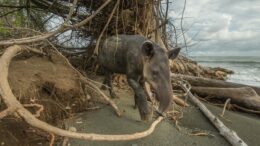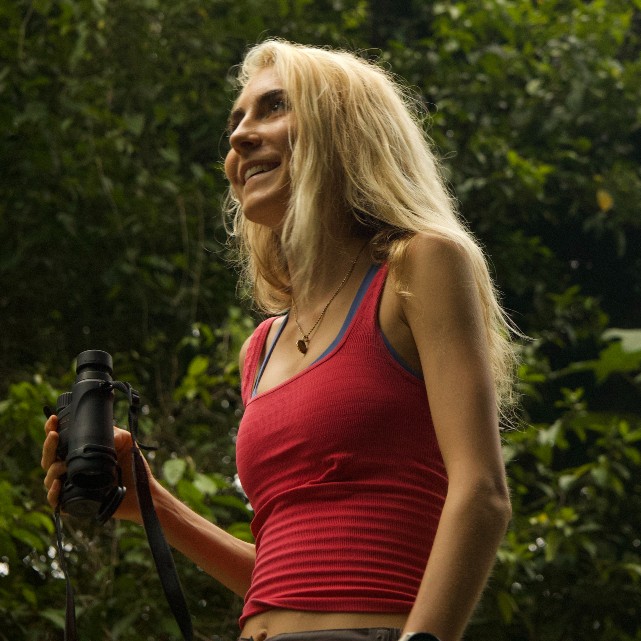It’s 6 p.m. in the lowland tropical rainforest; darkness and the drone of insects descend upon two camouflage-clad individuals. They hunker on an elevated wooden platform to conceal their scent from a potential passerby. For the next 12 hours, their senses will remain fixed on a pile of mangoes, bananas and a dash of molasses below — a powerful animal attractant.
The two women — wildlife veterinarian Priscila Peralta-Aguilar and biologist Sarah Wicks — take turns, one attempting to sleep and the other standing guard. Even the scuttling sound of a raccoon excites the weary observers sitting quietly amongst the famously biodiverse forests of Southern Costa Rica’s Osa Peninsula.
“Around 1:30, I heard a noise — something very soft,” Peralta-Aguilar tells me later as she recounts the night. “I thought — is it the raccoon again? I turned my red light in the direction of the sound.”
Her anticipation is understandable. She’s been holding this nightly vigil for four months. And as a media fellow working for the same nonprofit, Osa Conservation, I sometimes joined her arduous efforts to track and await a notoriously elusive creature. But on this night, the gentle giant now illuminated by her headlamp induces an adrenaline rush.
She stares the giant in the face: the largest mammal in the Neotropics. In a single motion — for which she has practiced well — Peralta-Aguilar grabs the tranquilizer, darting a Baird’s tapir (Tapirus bairdii) on the forest floor. Vets and biologists arriving at the prompt of a late-night call work in methodical silence to fit the female with a GPS collar, take biomorphic measurements, and collect biological samples that will help them understand the endangered animal’s health and genetics. Mere minutes after administering a reverser drug, the tapir awakes and departs nonchalantly; the team finally breathes a sigh of relief.
While passing months of insect-infused nights on a trying schedule may seem peculiar, the animal for whom these biologists patiently wait is more peculiar yet. Weighing in at an average of 660 pounds, the Baird’s tapir’s physical enormity has yet to confer its recognizability.
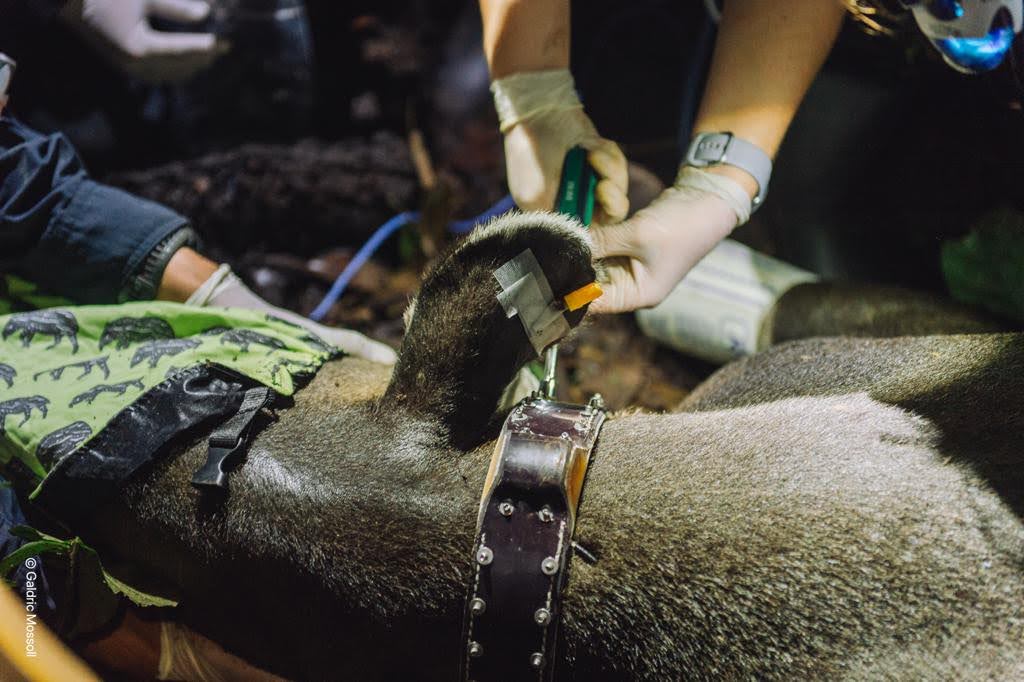
“As humans we tend to value more what we miss than what we have,” says Esteban Brenes-Mora, senior Mesoamerica associate at the conservation nonprofit Re:Wild and referred to colloquially as the “tapir guy.” He has dedicated his career to studying Baird’s tapirs, a species for which scant published research exists. We know shockingly little about the animal’s natural history and ecology; one is more likely to know of its two closest relatives, the rhino and horse, than this neotropical megafauna.
But here’s something we do know: We’d miss tapirs if they disappeared. And once before, they nearly did.
A Fragile Existence
Baird’s tapirs are currently listed as endangered by the International Union for the Conservation of Nature, with population estimates of around 4,500 remaining individuals — fewer than their critically endangered and popular cousin, the black rhino. Despite that troublingly low number, things would have been worse without efforts by conservationists, over the past 30 years, to expand and enforce protected areas.
Costa Rica is the only place where Baird’s tapir populations have recovered — a success largely owed to a socioeconomic model adopted in the 1990s to disincentivize destructive industries while incentivizing forest protection and restoration. This restructuring fueled forest recovery and fostered livelihoods conducive to human-wildlife coexistence. The country successfully maintains a network of protected areas where conservation groups, local communities and governments work together to prevent and mitigate threats to the species.
But problems remain across the animal’s range, which stretches through Mexico and Central America. One of the biggest threats is habitat loss, which has reduced the tapir’s distribution by as much as 50% in three decades. At least 70,000 square miles of forested habitat were lost between 2001 and 2010.
The largest mammal to survive the Pleistocene will require large, well-connected and diverse areas to continue its existence.
But areas for living and finding food have an alarming lack of connectivity and suitability. Half of the Baird tapir’s remaining habitat lies within protected areas, and even in these conserved regions, poaching, deforestation and wildlife trafficking further reduce populations.
Tapirs will need to make use of human-dominated landscapes, too, but the scientific community still lacks information on the species’ movement ecology within unprotected areas, which makes their study so important.
Friends of the Forest
“If we start imagining a planet without tapirs,” Brenes-Mora says, “we’d see a cascade effect down through the whole trophic net.”
Tapirs are a seldom-recognized backbone of neotropical ecosystems. Often described as “gardeners of the forest,” they eat seeds that smaller animals can’t, making them an essential dispersal agent for larger tree species once consumed by now-extinct megafauna. It’s likely tapirs have played a key role in keeping large-fruited species alive.
And while the Baird’s tapir is smaller than its vanished predecessors, it doesn’t skimp on meals. A 2015 study found one animal in Corcovado National Park consumed an average of 26 pounds per day. Its fecal matter, meanwhile, is essential for seed and plant-microbe dispersal.
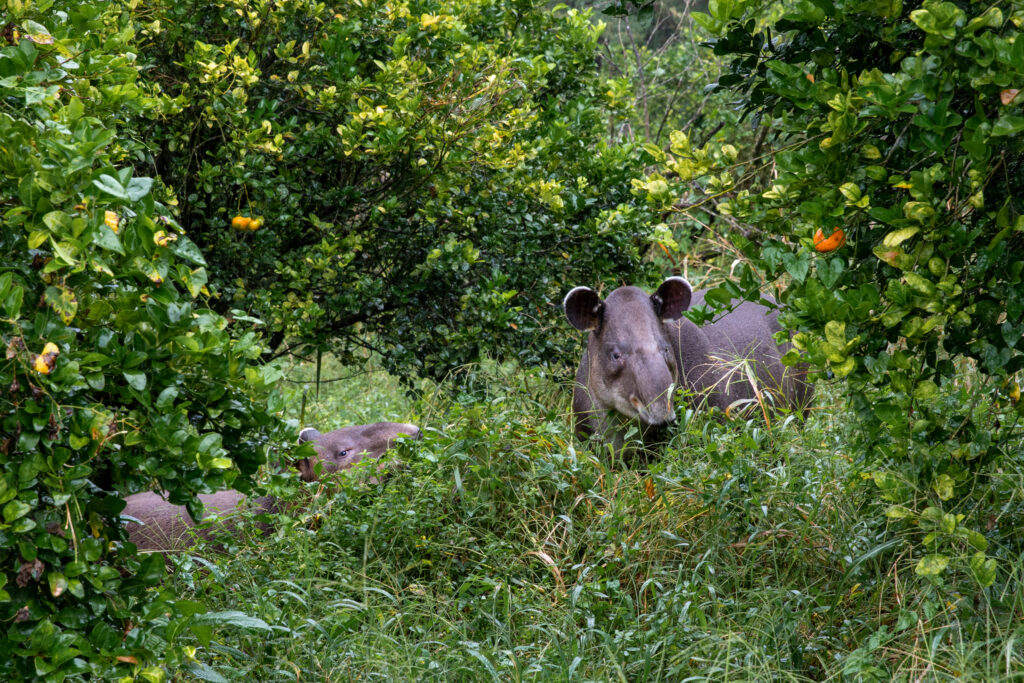
Tapirs also provide another critical service: Their abundant dung-making increases a forest’s carbon capacity. The tree species that tapirs disperse also tend to be those that sequester more atmospheric carbon. Tropical forests store 55% of the forest carbon stock globally, so we need tapirs’ ecosystem-stabilizing services to maintain one of our planet’s most critical carbon sinks.
Their diet is diverse, and so are the landscapes they inhabit. Where other species of conservation concern, such as jaguars, remain constrained to the most stringently protected habitats, Baird’s tapirs roam from the deepest reaches of protected national parks to regions as unexotic as a cucumber field.
But those same cucumber fields illustrate a problem: Humans and tapirs don’t always get along. The successful recovery of tapir populations in Costa Rica, thanks to stringently enforced protected areas, has caused increased interactions between tapirs and farmers, where tapirs raid crops and cause significant losses.
Jorge Rojas-Jiménez, a wildlife veterinarian, works with the Baird’s tapir in northern Costa Rica’s Bijagua. It’s an area where successful habitat protection and community-led conservation have ushered the return of these notoriously elusive animals to areas where they now exist more conspicuously, like people’s backyards.
“They are an adaptable species — they can shape any ecosystem and feed from any plant that isn’t necessarily inside a primary forest,” he says. Recent studies show Baird’s tapirs to be more resilient and capable of utilizing available habitat in fragmented corridors than previously suggested; the species commonly uses secondary forest tracts to move between primary forest patches.
Tapirs’ ability to utilize human-disturbed landscapes should be heeded for three main reasons. Firstly, the Baird’s tapir demonstrates that we shouldn’t discount deforested or human-modified habitat patches — critical to fostering connectivity in a fragmented Mesoamerica — for their potential to become protected areas. Secondly, tapirs’ magic dung may be just the natural restoration strategy needed in a world of conservation limited by resources and time. Finally, and importantly, tapirs aren’t just sowing trees but the seeds of social change, too. Their readiness to move into human-disturbed landscapes means these alluring animals have profound potential to be a “flagship species” for Central American biological corridors.
“Tapirs have become an icon for ecotourism and income,” Brenes-Mora says. “People have seen that one hectare with cows is less profitable than a hectare with a nice forest and a couple of trails.”
On the Move
Large mammals often generate public support for biodiversity protection — tigers, elephants and rhinos have been lauded for supercharging conservation and sustainable tourism. Tapir recovery in areas like the Tenorio-Miravalles Biological Corridor in Costa Rica represents a living example of community-fueled species recovery seldom witnessed in the age of extinction. But we can’t take this heartwarming tale for granted — endangered megafauna and communities living in harmony results from decades-long, dedicated efforts to create and rigorously enforce habitat areas.
Given adequate protection, we know tapirs will, albeit slowly, creep outside the bounds of protected areas into habitat corridors and human-dominated landscapes, where similarly imperiled yet more disturbance-sensitive species like jaguars remain out of the public’s eye. Corcovado National Park, Costa Rica’s largest national park in the country’s south Pacific region, demonstrates precisely the effectiveness of creating and enforcing protected areas to recover endangered species populations.
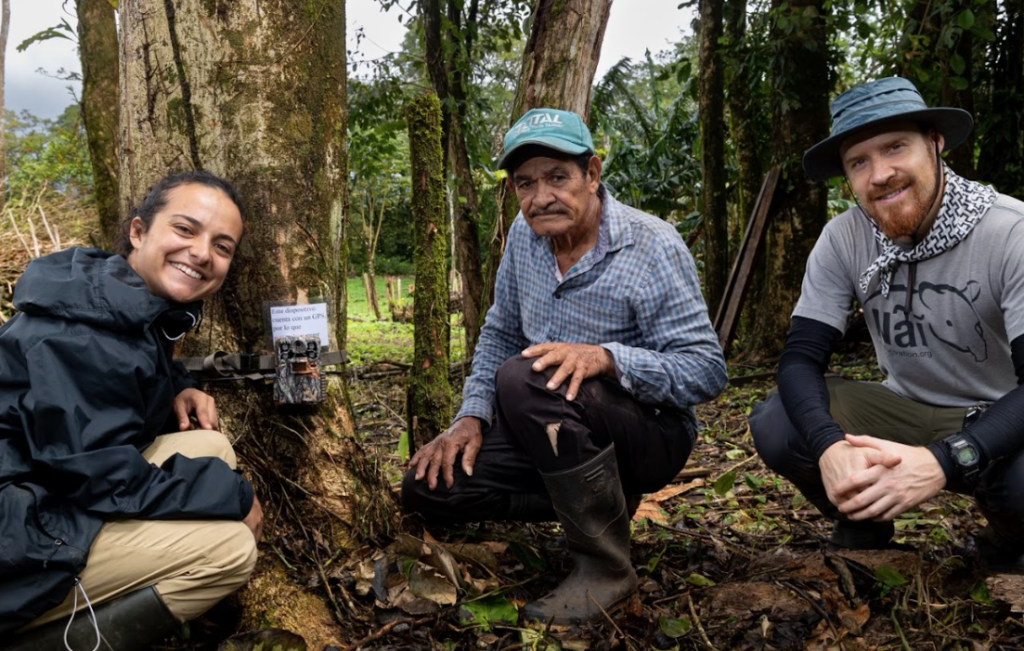
Eleanor Flatt, an ecologist at Osa Conservation, has lived adjacent to this biologically intense, protected ecosystem for nearly a decade. She’s witnessed Baird’s tapirs recover within the park’s bounds and move willingly into secondary forested areas and landscape matrices. As an author on a 2021 study investigating tens of thousands of camera trap photos from the region, Flatt can testify to both the rebound of the species and the excitement with which local landowners describe hosting endangered species on their properties.
“People don’t know much about tapirs, even those who live in the area, because they wouldn’t have seen them for the past 30 years,” she says. “As soon as you learn about their importance, they can be a definite key flagship species for conservation.”
That’s why researchers have spent countless hours trying to tag and track the animals in the hope of learning more about them — and protecting them. Baird’s tapirs harbor massive conservation potential, both ecologically and socially, yet we still lack a complete picture of their movement and range requirements outside protected areas and within biological corridors. Transmissions from a GPS collar will produce precisely this valuable information.
“For conservation, we need to know how species move in unprotected areas,” says Flatt. “That’s where our efforts are needed most, to guide how you manage, improve and establish functional biological corridors regarding habitat connectivity and climate change.”
More GPS-toting tapirs mean more data from which conservationists can accurately pinpoint and protect priority landscapes, designate corridors critical to the species’ survival, and predict where and when local extinctions may occur. Live-tracking technologies also enable scientists to understand where and when wildlife-human conflicts arise, allowing negative interactions between wildlife and humans to be settled with participative and sustainable solutions co-created between conservationists, communities and farmers.
“This is the largest collaring and movement ecology project done with the tapir — it is the most extensive study of the species so far,” says Brenes-Mora. “Costa Rica is in a stage where we must start looking at how people-dominated landscapes can feed into wildlife conservation.”
Wild animals will require not only refuge within protected areas but also the space, resources, and ability to migrate offered by human-dominated landscapes. Tapirs exemplify the possibility of sharing in our planet’s riches, how human-wildlife coexistence can, and must, be central to social and economic systems. Tapirs show us the way of the future.
Camera trap footage from the secondary forests surrounding Osa Conservation’s wilderness preserve — land completely devoid of both trees and tapirs just 40 years ago — recently revealed a female Baird’s tapir with a small, dappled calf in tow. By enforcing protected areas, we’ve already saved the species from extinction once — efforts that paid dividends ecologically and socially.
Now, in the face of changing climate patterns, land use, and reduced wildlife populations, it’s imperative that we expand conservation beyond protected areas. Tapirs show that a conservation model premised on coexistence can come at little or no cost to human livelihoods. If the tireless platform-sitting biologists are any testament, tapirs are an indispensable species, their size a metaphor for their sheer potential to spearhead novel conservation models. Brenes-Mora summed it up poignantly — “Tapirs need us to save them,” but “we need them more.”
If we give tapirs what they need — first protected areas, and next the ability to inhabit and move through human-disturbed landscapes — they’ll be sure to reciprocate. A simple fecal gift, rich with potential, maybe the only favor required in return.
Previously in The Revelator:
All the World’s a Camera Trap
![]()

